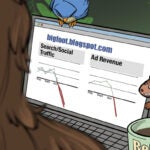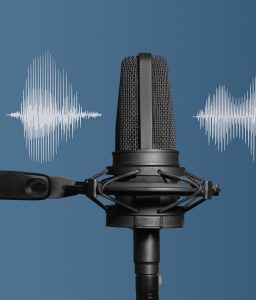For podcast advertising to truly take off, marketers need to be able to evaluate podcasts for brand safety and suitability at scale.
But most podcast campaigns still involve manually evaluating particular shows before deciding whether to run ads, said Michael Consolazio, VP and digital brand standards lead at GroupeConnect, a division of Publicis Groupe.
There aren’t many controls aside from buying individual podcasts, Consolazio said. “Plus, if you’re using a manual approach, you’re looking at the podcast as a whole, versus at the episodic level.”
To encourage advertisers to work with a wider range of podcast publishers, the podcast monetization platform Acast on Thursday announced a new integration with Barometer, a media quality measurement startup with a focus on brand safety for digital audio.
Barometer will now provide brand safety rankings for all of Acast’s podcast inventory, with show-level rankings that advertisers can use for pre-campaign planning. Barometer will also facilitate post-campaign measurement using a tracking pixel provided by Claritas’ ArtsAI to ensure inventory met the brand’s safety and suitability parameters.
Pre-campaign planning
Barometer’s solution uses AI to transcribe podcast episodes, then parse them for signals about context and sentiment. The solution also assigns each show and episode a brand safety score based on the now-defunct GARM’s brand safety standard, which divides inventory into low-, medium- and high-risk pools.
Although Barometer’s solution analyzes podcasts at both the show level and episode level, Acast will only offer show-level classifications at launch. However, advertisers can request deeper episode-level insights.
Acast is also exploring use cases for Barometer’s Host Intelligence sentiment scores, which evaluate podcast hosts themselves for brand safety.
Acast’s integration of Barometer is the latest example of digital audio platforms getting serious about programmatic integrations, with brand safety high on the list, Consolazio said. He pointed to Spotify’s partnership with IAS and iHeart Media’s Triton Digital acquiring Sounder as other steps in the right direction.
Acast integrated with ComScore for pre-campaign planning based on brand safety scores back in 2022. However, that solution doesn’t provide post-campaign reporting, said Valerie Reimer, Acast’s VP of ad tech and product partnerships.
But, while Barometer’s tech can also support targeting for programmatic campaigns, and Acast is considering applying that capability, the Acast integration is intended more as a pre-campaign planning tool, she said.
Curating content
Brands and agencies can use Barometer’s tech to curate brand-safe private marketplaces and programmatic direct deals, said Tamara Zubatiy, co-founder and CEO of Barometer. Then, when the campaign has run, they can review where their ads served.
Advertisers can also set different brand safety parameters for private marketplaces based on genre, Reimer said. For example, they could relax their standards around profanity for comedy podcasts or their standards for violent content when buying true crime podcasts.
The impact that applying all of these various brand safety settings will have on campaign reach is also visualized in Barometer’s user interface, Zubatiy said.
Plus, Acast having direct publisher partnerships means it has a process in place for publishers to challenge Barometer’s brand safety classifications if they feel unfairly classified, Zubatiy added. Some keywords might be hot-button social topics one year and non-issues the next.
GroupeConnect hasn’t tested Acast’s Barometer integration yet, Consolazio said. However, it previously independently tested Barometer’s tech for post-campaign measurement and curation.
“It really automated and streamlined the manual process of creating an inclusion list,” he said, adding, “Obviously, we would be excited to activate programmatically at an episodic level.”
A wider pool of pubs
By giving advertisers more automated tools to assess brand safety, Acast hopes to widen the pool of podcast inventory they’re comfortable buying, Reimer said.
“We have 125,000 podcasts worldwide, and when you try to cherry-pick shows, you miss out on key audiences and smaller niche shows where listeners are really engaged,” she said.
She added that Acast still wants to sell “cherry-picked, host-read ads,” but it also wants advertisers to feel comfortable “running against 1,000 to 2,000 shows, and that’s where brand safety has always been the concern.”
Exposure to more shows will mean greater relationships that blossom into either more programmatic business or direct sponsorships, Consolazio said.
“It gives us more power to show up where we want to show up,” he said, “and more control and transparency to the advertiser.”


















